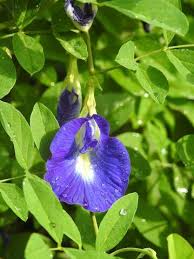Embracing Winter’s Chill: Caring for Rosa Gallica During the Cold Season

As the winter frost blankets the landscape, Rosa Gallica, with its timeless beauty, requires special care and attention to thrive amidst the chilly embrace of the cold season. In this exploration of winter care techniques for Rosa Gallica, we unveil a tapestry of practices designed to nurture and protect these delicate blooms, ensuring their vitality and resilience through the harshest of winters. Join us as we delve into the art of winter care for Rosa Gallica, discovering the secrets to safeguarding their beauty and vitality throughout the frosty months.
#### Understanding the Winter Needs of Rosa Gallica: Nurturing Resilience in the Cold
1. **Pruning and Trimming**: Before the onset of winter, it’s essential to prune Rosa Gallica to remove dead or diseased branches and shape the plant for optimal growth. Trimming back long, straggly branches helps improve air circulation and reduces the risk of fungal diseases, ensuring the health and vigor of Rosa Gallica during the winter months.
2. **Mulching for Insulation**: Applying a layer of organic mulch around the base of Rosa Gallica provides essential insulation against freezing temperatures and helps retain soil moisture. Mulching also suppresses weed growth, protects the roots from temperature fluctuations, and enriches the soil as it decomposes, creating a nourishing environment for Rosa Gallica to thrive.
3. **Watering Considerations**: While Rosa Gallica requires less water during the dormant winter months, it’s crucial to monitor soil moisture levels and provide supplemental irrigation during dry spells. Watering deeply and infrequently ensures that Rosa Gallica receives adequate hydration without risking waterlogging, which can lead to root rot in poorly drained soils.
#### Protecting Rosa Gallica from Winter Hazards: Shielding Against Frost and Cold Damage
1. **Frost Protection Measures**: Frost poses a significant threat to Rosa Gallica, causing damage to tender buds and new growth. To protect Rosa Gallica from frost damage, cover the plants with frost cloth or burlap during cold snaps, or create temporary shelters using stakes and blankets to shield them from freezing temperatures and icy winds.
2. **Windbreak Establishment**: Strong winter winds can desiccate Rosa Gallica foliage and cause structural damage to the plant. Erecting windbreaks, such as fences, hedges, or temporary barriers, helps mitigate the drying effects of winter winds and provides shelter for Rosa Gallica, reducing stress and promoting healthy growth during the cold season.
3. **Snow Removal Practices**: While a picturesque blanket of snow can insulate Rosa Gallica and protect it from extreme cold, heavy snowfall can also weigh down branches and cause them to break. Carefully remove excess snow from Rosa Gallica using a broom or soft brush to prevent structural damage and ensure the plant’s continued health and vitality.
#### Preparing Rosa Gallica for Winter Dormancy: Encouraging Rest and Rejuvenation
1. **Fertilization and Soil Amendments**: Applying a balanced, slow-release fertilizer in late autumn provides Rosa Gallica with essential nutrients to support winter dormancy and prepare for vigorous spring growth. Additionally, amending the soil with organic matter, such as compost or aged manure, enriches the soil structure and promotes microbial activity, enhancing nutrient availability for Rosa Gallica roots.
2. **Disease Prevention Practices**: Preventing fungal diseases such as powdery mildew and black spot is essential for maintaining Rosa Gallica health during winter dormancy. Remove and dispose of fallen leaves and debris, sanitize pruning tools between cuts, and avoid overhead watering to minimize moisture on foliage, reducing the risk of fungal infections and ensuring Rosa Gallica’s vitality in the seasons to come.
3. **Winter Shelter Construction**: For Rosa Gallica grown in containers or exposed locations, providing winter shelter can help protect the plants from harsh weather conditions and temperature extremes. Constructing simple cold frames, hoop houses, or portable greenhouses around Rosa Gallica provides added insulation and protection, extending the growing season and enhancing winter survival rates.
#### Embracing the Tranquility of Winter: Nurturing Rosa Gallica Through the Cold
In conclusion, caring for Rosa Gallica during the winter months requires a thoughtful and proactive approach, rooted in an understanding of the plant’s unique needs and vulnerabilities. By employing a combination of pruning, mulching, frost protection, and winter dormancy preparations, growers can ensure the health and vitality of Rosa Gallica, nurturing them through the cold season and laying the foundation for a vibrant spring bloom. So, as winter’s chill descends, embrace the tranquility of the season and tend to Rosa Gallica with care, knowing that your efforts will be rewarded with a resplendent display of beauty when springtime arrives.
### Nurturing Rosa Gallica Through Winter: Continued Care and Maintenance
In the serene embrace of winter’s chill, Rosa Gallica, with its timeless elegance, requires ongoing care and attention to ensure its well-being and vitality throughout the cold season. Building upon the foundational principles of winter care introduced in the previous section, we delve deeper into the intricacies of nurturing Rosa Gallica through winter, unveiling additional strategies and techniques to safeguard these beloved blooms against the rigors of frost and snow. Join us as we explore the art of winter care for Rosa Gallica, discovering how to cultivate resilience and beauty in the midst of nature’s harshest season.
#### Monitoring and Adjusting Care Practices: Adapting to Winter’s Changing Conditions
1. **Temperature Regulation**: As temperatures fluctuate throughout the winter months, it’s essential to monitor weather forecasts and adjust care practices accordingly. During periods of extreme cold, consider providing supplemental heat sources, such as frost blankets or heated propagators, to protect Rosa Gallica from frost damage and maintain optimal growing conditions.
2. **Water Management**: Balancing Rosa Gallica’s water needs during winter can be challenging, particularly in regions prone to alternating periods of freezing and thawing. Monitor soil moisture levels regularly and adjust watering frequency based on weather conditions and plant requirements. Avoid watering during freezing temperatures to prevent ice formation around the roots, which can damage delicate root tissues.
3. **Light Exposure**: Shortened daylight hours and overcast skies during winter can impact Rosa Gallica’s light exposure and photosynthetic activity. Positioning plants in locations with maximum sunlight exposure and supplementing natural light with artificial grow lights can help maintain healthy growth and prevent stretching or legginess in Rosa Gallica foliage.
#### Pest and Disease Management: Protecting Rosa Gallica Against Winter Threats
1. **Pest Prevention**: While pests are less active during the winter months, certain insects, such as aphids and spider mites, may still pose a threat to Rosa Gallica. Inspect plants regularly for signs of pest infestation, such as yellowing leaves or distorted growth, and treat affected plants promptly with organic insecticidal soap or neem oil to control pest populations and prevent damage.
2. **Disease Control**: Fungal diseases, such as botrytis and powdery mildew, can proliferate in cool, damp conditions typical of winter. Implement preventive measures, such as proper air circulation, adequate spacing between plants, and removal of infected plant debris, to minimize the risk of fungal infections and maintain Rosa Gallica’s health and vigor throughout the season.
3. **Sanitation Practices**: Practicing good sanitation in the garden is crucial for preventing the spread of pests and diseases. Remove fallen leaves, spent flowers, and other debris from around Rosa Gallica plants to eliminate potential breeding grounds for pests and pathogens. Disinfect pruning tools between cuts to prevent cross-contamination and reduce the risk of spreading diseases from infected to healthy plants.
#### Winter Pruning and Maintenance: Promoting Health and Vigor in Rosa Gallica
1. **Selective Pruning**: Winter provides an ideal opportunity to perform selective pruning on Rosa Gallica to shape the plant, remove dead or damaged branches, and encourage robust growth in the coming season. Use sharp, sterile pruning shears to make clean cuts at a 45-degree angle, just above a healthy bud or lateral branch, to promote healing and minimize the risk of disease entry.
2. **Grooming and Deadheading**: Regular grooming and deadheading of spent flowers help maintain the aesthetic appeal of Rosa Gallica and promote continuous blooming throughout the season. Remove faded blooms and yellowing foliage to redirect the plant’s energy towards new growth and flowering, keeping Rosa Gallica looking tidy and vibrant even in the depths of winter.
3. **Winter Protection Structures**: In regions with severe winter weather conditions, consider erecting temporary shelters or cold frames around Rosa Gallica to provide additional protection against frost, snow, and harsh winds. Constructing simple structures using frost cloth, PVC pipes, or wooden frames creates a microclimate that shields Rosa Gallica from winter’s worst, ensuring their survival and well-being until spring arrives.
#### Embracing Winter’s Beauty: Nurturing Rosa Gallica Through the Cold
In conclusion, caring for Rosa Gallica during the winter months requires diligence, adaptability, and a deep understanding of the plant’s unique needs and vulnerabilities. By monitoring weather conditions, adjusting care practices accordingly, and implementing proactive pest and disease management strategies, growers can ensure the health and vitality of Rosa Gallica throughout the cold season, setting the stage for a glorious resurgence of beauty and fragrance in the spring. So, as winter’s frost settles in, embrace the tranquility of the season and tend to Rosa Gallica with care, knowing that your efforts will be rewarded with a bountiful display of blooms when warmer days return.


